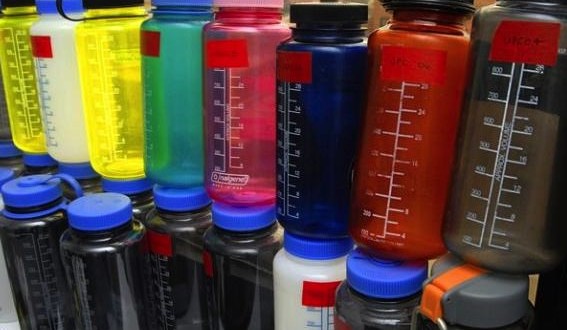Exposure to certain chemicals commonly found in plastics and other products is associated with lower levels of testosterone in men, women and children, a new study says.
Testosterone is the main sex hormone in men. It contributes to a variety of functions in both sexes, including physical growth and strength, brain function, bone density and cardiovascular health. In the last 50 years, research has identified a trend of declining testosterone in men and a rise in related health conditions, including reduced semen quality in men and genital malformations in newborn boys.
Animal and cellular studies have found that some phthalates block the effects of testosterone on the body’s organs and tissues. Researchers set out to examine whether these chemicals, which are widely used in flexible PVC plastics and personal care products, had a similar effect in humans.
“We found evidence reduced levels of circulating testosterone were associated with increased phthalate exposure in several key populations, including boys ages 6-12, and men and women ages 40-60,” said one of the study’s authors, John D. Meeker, MS, ScD, of the University of Michigan School of Public Health in Ann Arbor, MI. “This may have important public health implications, since low testosterone levels in young boys can negatively impact reproductive development, and in middle age can impair sexual function, libido, energy, cognitive function and bone health in men and women.”
The cross-sectional study examined phthalate exposure and testosterone levels in 2,208 people who participated in the U.S. National Health and Nutrition Examination Survey, 2011-2012. Researchers analyzed urine samples to measure concentrations of 13 substances left after the body metabolizes phthalates. Each participant’s testosterone level was measured using a blood sample.
Researchers found an inverse relationship between phthalate exposure and testosterone levels at various life stages. In women ages 40-60, for example, increased phthalate concentrations were associated with a 10.8 to 24 percent decline in testosterone levels. Among boys ages 6-12, increased concentrations of metabolites of a phthalate called di-(2-ethylhexyl) phthalate, or DEHP, was linked to a 24 to 34.1 percent drop in testosterone levels.
“While the study’s cross-sectional design limit the conclusions we can draw, our results support the hypothesis that environmental exposure to endocrine-disrupting chemicals such as phthalates could be contributing to the trend of declining testosterone and related disorders,” Meeker said. “With mounting evidence for adverse health effects, individuals and policymakers alike may want to take steps to limit human exposure to the degree possible.”
Agencies/Canadajournal
 Canada Journal – News of the World Articles and videos to bring you the biggest Canadian news stories from across the country every day
Canada Journal – News of the World Articles and videos to bring you the biggest Canadian news stories from across the country every day



